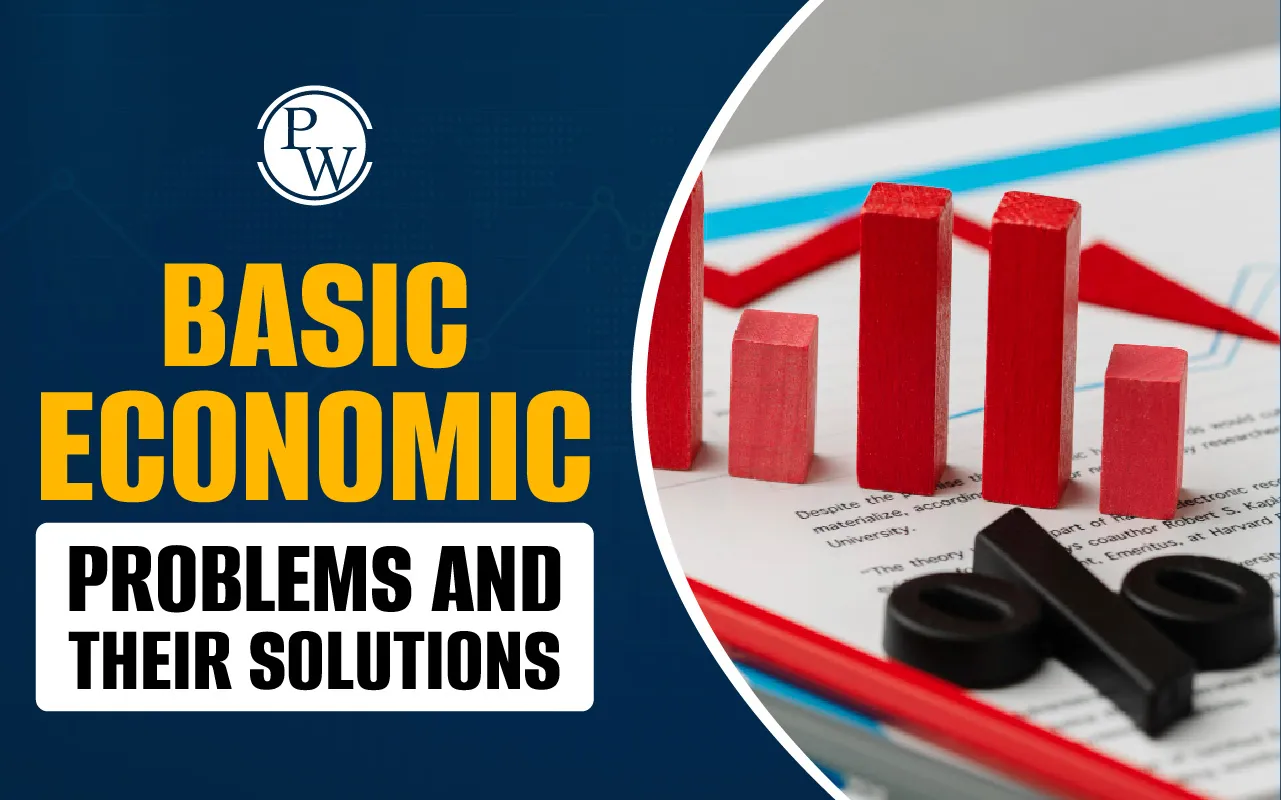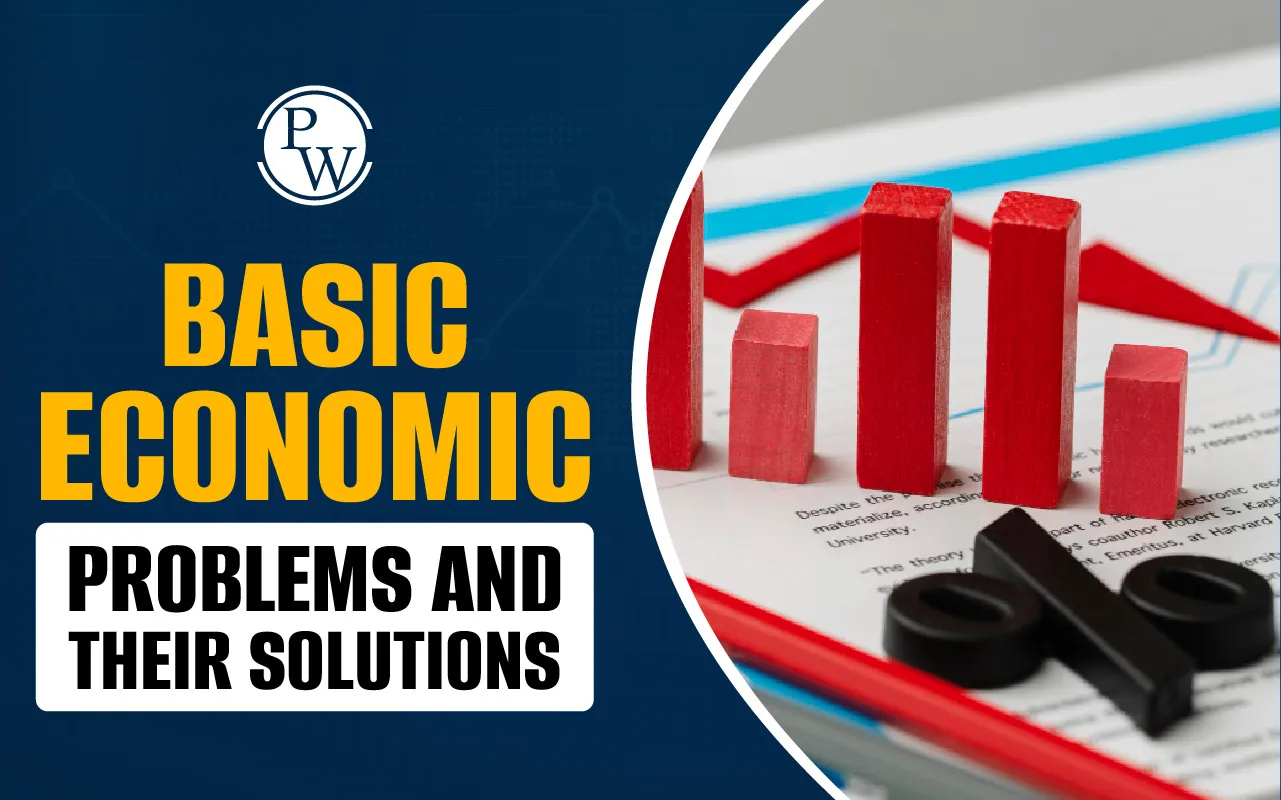

Every economy, whether developed or developing, faces certain fundamental challenges. These challenges arise due to the scarcity of resources and the unlimited nature of human wants. These challenges are collectively known as Basic Economic Problems. Addressing these problems is essential for achieving balanced growth and efficient resource utilization in any country. In this article, we will explore the Basic Economic Problems, their underlying causes, and the possible solutions adopted by different economies to manage them.
What are Basic Economic Problems?
The term Basic Economic Problems refers to the fundamental issues that arise due to the conflict between limited resources and unlimited human wants. No economy in the world has infinite resources. However, people have endless desires and needs that they seek to fulfill. This mismatch creates a scenario where choices must be made, leading to several core economic problems.
Also Check: Circular Flow of Income in a Two-Sector Economy
The Basic Problems of an Economy
Basic problems of an economy are typically classified into the following categories:
1. What to Produce?
This problem relates to the selection of goods and services that should be produced using the limited resources available. Since resources are scarce, an economy cannot produce everything. Therefore, choices must be made about which goods to produce (essential or luxury), in what quantity, and for which sections of the population.
2. How to Produce?
This problem focuses on choosing the production technique. Should the economy adopt labor-intensive techniques or capital-intensive methods? For example, in countries where labor is abundantly available, labor-intensive methods may be more beneficial. In contrast, countries with advanced technology may prefer capital-intensive production.
3. For Whom to Produce?
This problem is about the distribution of goods and services. It asks who will get how much of the total output. The objective is to decide how the goods produced will be shared among the population, taking into account income levels and purchasing power.
4. Efficient Utilization of Resources
Every economy must ensure that it uses its resources—land, labor, capital, and enterprise—in the most efficient way possible. Wastage or underutilization of resources can limit growth and development.
5. Growth of Resources
Another basic economic problem is how to increase the resources available to an economy. This includes developing human capital, improving technology, and increasing investment in infrastructure.
Causes Behind Basic Economic Problems
Understanding the causes of Basic Economic Problems is key to finding suitable solutions. Some primary reasons include:
Scarcity of Resources: Natural resources, manpower, capital, and entrepreneurship are limited in supply.
Unlimited Human Wants: Individuals, societies, and governments have ever-growing needs and desires.
Alternative Uses of Resources: Most resources can be used in multiple ways, and choosing the best use is often a dilemma.
Inefficiencies in Distribution: Economic inequality often leads to unequal access to resources and outputs.
Solutions to Basic Economic Problems
Different economies tackle the Basic Economic Problems in various ways, depending on whether they follow a capitalist, socialist, or mixed economic system.
1. Market Economy (Capitalist Solution)
In a market economy, decisions about what, how, and for whom to produce are determined by the forces of supply and demand. Prices act as signals, and private individuals and firms make production decisions. The efficiency of resource utilization is managed through competition.
- Advantages: Encourages innovation, efficient resource allocation, and consumer choice.
- Challenges: Can lead to economic inequality and neglect of social welfare.
2. Planned Economy (Socialist Solution)
In a planned economy, the government takes charge of making decisions regarding production and distribution. Centralized planning ensures that resources are directed towards the welfare of society as a whole.
- Advantages: Focuses on social welfare and reduces inequality.
- Challenges: Often results in inefficiency, corruption, and a lack of consumer choice.
3. Mixed Economy
Most modern economies adopt a mixed approach where both the private and public sectors participate in decision-making. This model combines the efficiency of the market system with the social welfare goals of a planned economy.
- Advantages: Balances profit motive with public interest, reduces extreme inequalities.
- Challenges: Requires strong governance to prevent misuse of resources.
Real-World Applications
To understand how Basic Economic Problems are handled in real life, consider the following examples:
India’s Agricultural Sector: Decisions regarding crop production often involve considering what to produce based on weather, demand, and support prices.
Technology Industry: Companies must choose between manual labor or automation depending on cost, scalability, and market competition.
Healthcare Distribution: During emergencies like the COVID-19 pandemic, determining who should receive vaccines first was a real-world example of "For whom to produce."
Importance of Addressing Basic Economic Problems
Solving the Basic problems of an economy is not just an academic exercise. It impacts everyday lives, determines the standard of living, and influences the overall development of a nation. Economies that manage to address these issues effectively tend to be more stable, inclusive, and progressive.
Basic Economic Problems of what to produce, how to produce, and for whom to produce are central to the study and application of economics. Every economy, regardless of its development stage, faces these challenges. The way a country chooses to address these problems determines its path of growth and sustainability. By understanding these issues and implementing thoughtful solutions, societies can better manage their resources and meet the needs of their people. Whether through market dynamics, government planning, or a combination of both, the goal remains the same: optimal use of resources and equitable distribution of goods and services.
Join PW Commerce Online Course and unlock your potential with quality education and dedicated learning support.
Basic Economic Problems FAQs
What are the Basic Economic Problems faced by every economy?
Why do Basic Economic Problems occur?
How do different economic systems address Basic Economic Problems?
What is the importance of solving Basic Economic Problems?













